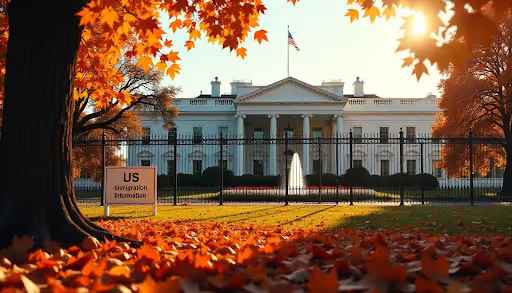.png)
.png)
A complete guide to the EB2 NIW application process with steps, timelines, and tips for Indian and Pakistani applicants, including premium processing options.

Looking for a green card option that doesn’t tie you to an employer? The EB2 NIW application process could be the best fit. Unlike most employment-based visas, the EB2 National Interest Waiver allows you to self-petition, which means no job offer, no labor certification, and more control over your future. This route is ideal for professionals who bring value to the U.S. economy, culture, or scientific advancement. Think of a startup founder driving innovation, a scientist working on life-saving research, or an engineer solving large-scale infrastructure challenges. By showing that your work benefits the national interest, you can bypass the usual hurdles and secure permanent residency faster.
So, how does the EB2 NIW process really work, especially for Indian and Pakistani applicants who often face longer wait times? Let’s break it down step by step in plain language.
The EB2 NIW is a special green card category for individuals with either an advanced degree, such as a Master’s or higher (or a Bachelor’s plus five years of progressive experience), or exceptional ability in sciences, business, or the arts. What makes it unique is the “National Interest Waiver.” Normally, EB2 applicants need a U.S. employer to sponsor them and go through the lengthy PERM labor certification. But with a waiver, you’re asking USCIS to skip that requirement because your work benefits the United States broadly, not just one employer.
Who typically qualifies? Imagine a medical researcher developing new treatments, a clean-energy expert tackling climate change, or an AI entrepreneur creating technology that supports U.S. economic growth. If your contributions have a substantial impact on society, you’re a strong candidate for the EB2 NIW green card. And the best part? You’re in control of the petition process—you don’t need to rely on anyone else.
The EB2 NIW process steps are straightforward once you understand them. First, you begin with an eligibility review and prepare evidence. Before you file anything, you’ll need to evaluate your qualifications. Do you meet the advanced degree or exceptional ability criteria? Do you have proof that your work is in the national interest? Typical evidence includes recommendation letters from recognized experts, publications, citations, patents, media features, or proof of high-impact projects that show your work benefits the U.S. on a larger scale.
Next comes filing Form I-140 with USCIS. This petition is the heart of your NIW case. It explains why you qualify, includes all supporting evidence, and formally requests the National Interest Waiver. Once this form is submitted, you wait for USCIS to review your petition.
Premium processing is now an option for EB2 NIW petitions, which is a huge benefit. For an additional $2,805, USCIS will process your I-140 within 45 calendar days instead of several months. This step is optional but highly recommended if you want to speed up the first stage.
After your I-140 is approved, you move to the final stage—either filing Form I-485 (adjustment of status) if you are already in the United States on a valid visa, or completing consular processing if you are outside the country. Both routes lead to your green card, but the choice depends on your situation.
Yes, premium processing is now available for EB2 NIW petitions. Before 2022, there was no way to fast-track this type of petition, but now USCIS guarantees an action on your I-140 within 45 calendar days if you pay the premium processing fee. This change is particularly important for Indian and Pakistani applicants who often face additional delays due to visa backlogs. By saving several months on the I-140 stage, you can get ahead of the queue faster.
It’s important to understand, however, that premium processing only applies to the I-140 petition. It does not speed up the I-485 adjustment of status or consular processing stage. Still, many applicants choose it to reduce the uncertainty of the first step and move forward with confidence.
Processing times vary depending on where you’re from and whether you choose premium processing. Without premium, I-140 NIW petitions typically take six to twelve months for USCIS to review. With premium processing, the decision arrives within 45 days. After approval, the adjustment of status (Form I-485) can take another eight to fourteen months, while consular processing outside the U.S. usually takes six to nine months after I-140 approval.
For applicants from India and Pakistan, there’s an added layer: the visa bulletin. EB2 categories for Indian nationals often have a backlog, meaning you might need to wait months—or even years—for your priority date to become current before filing I-485. For Pakistani applicants, the wait is often shorter because there’s no significant backlog in the EB2 category for that country. This makes a big difference in the overall timeline.
Form I-140 is the foundation of your NIW case. USCIS uses it to evaluate whether you qualify for the waiver. Once approved, you either file Form I-485 (if you are inside the U.S.) or begin consular processing through your local U.S. embassy if you are abroad. Generally, I-140 processing takes six to twelve months without premium, but if you opt for premium, you can get a decision in just 45 days. After that, I-485 processing typically takes another eight to fourteen months depending on the USCIS service center handling your case.
Keep in mind that any Request for Evidence (RFE) can delay the process. RFEs happen when USCIS feels your petition didn’t include enough proof or clarity. That’s why preparing a strong, detailed application upfront is critical to avoiding unnecessary slowdowns.

If you’re already in the United States on a valid visa, adjustment of status is often the more convenient choice. It allows you to remain in the U.S. while your application is pending, and you can even apply for work authorization in the meantime. If you are living outside the U.S., consular processing is your path. You’ll attend an interview at the U.S. embassy in your home country, and once approved, you’ll receive your immigrant visa to enter the U.S. as a permanent resident.
For Pakistani applicants already abroad, consular processing can often be faster. For Indian applicants already in the U.S., adjustment of status tends to be simpler, though you may still face longer waits due to visa bulletin backlogs.
Even strong candidates can face delays. Weak evidence that fails to clearly demonstrate national interest is one of the most common reasons for RFEs. Generic or poorly written recommendation letters that don’t provide specific details about your work also weaken your case. Missing key documents or filing forms incorrectly can add months to your timeline. Finally, some USCIS service centers are simply more backlogged than others, which can slow processing further.
To avoid these problems, it’s wise to work with an experienced immigration team. A well-prepared petition minimizes the chances of RFEs and denials, saving you time and stress. This is where professional help from Beyond Border can make all the difference.
For a typical applicant, the timeline looks like this. It takes about one to three months to gather documents and file the I-140. If you choose premium processing, USCIS will review it within 45 days. Without a premium, it may take six to twelve months. After I-140 approval, adjustment of status takes eight to fourteen months, while consular processing takes about six to nine months.
For Indian applicants, there’s often an additional wait because of the EB2 backlog, meaning your priority date may not be current right away. For Pakistani applicants, the full process can take roughly twelve to eighteen months with premium processing, as there’s typically no backlog in that category.

Before you begin the EB2 NIW application process, make sure you have proof of your advanced degree or exceptional ability, strong recommendation letters from credible experts in your field, solid evidence of your work’s national importance like publications or patents, and a well-written personal statement that explains why your work benefits the U.S. Be sure all USCIS forms are correctly filled out and filing fees are accurate.
A well-prepared petition saves months of time by avoiding RFEs and denials. If you want expert guidance, Beyond Border can help you craft a flawless NIW application. From evidence strategy to filing support, our team ensures your petition is ready for success.eb2
Take the Next Step Toward Your Green Card
The EB2 NIW application process may sound complex, but with the right preparation, it’s one of the most flexible ways to secure a U.S. green card. Whether you’re a scientist, entrepreneur, or engineer, this path gives you control over your future without depending on an employer.
Want personalized help? Contact Beyond Border today to start your NIW journey with confidence. Also, check out the official USCIS site for the latest forms and updates.